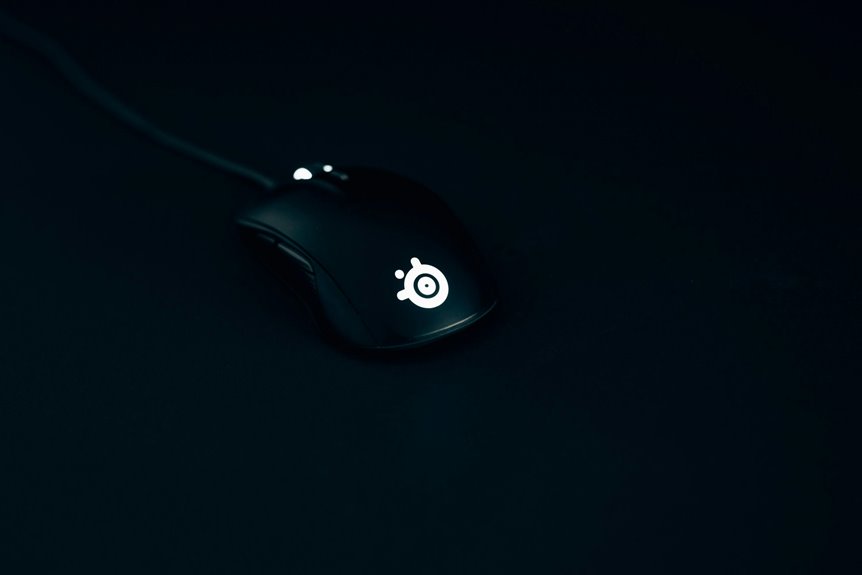Polyamide cord is a strong, flexible material made from long chains of nylon polymers linked by amide bonds. You’ll find it in sports gear, upholstery, ropes, nets, and automotive components like tires and belts because it’s abrasion-resistant, elastic, and handles heavy loads without breaking. Its durability and quick-drying nature make it great for high-impact and outdoor use. If you want to understand its chemical makeup, manufacturing, and environmental impact, you’re in the right place to explore further.
Table of Contents
Key Takeaways
- Polyamide cord is a strong, flexible cord made from nylon polymers with high tensile strength and abrasion resistance.
- It is commonly used in textiles, ropes, nets, safety harnesses, and outdoor gear requiring durability.
- The cord reinforces tires and automotive parts, enhancing strength, wear resistance, and shape retention.
- Its quick-drying and chemical-resistant properties make it ideal for sports equipment and fishing lines.
- Polyamide cords are produced through extrusion, twisting, and heat treatment to ensure uniformity and elasticity.
Chemical Composition of Polyamide Cord
Polyamide cords consist primarily of long chains of repeating amide groups, which give them strength and flexibility.
When you look closer, these chains are made from monomers linked by peptide bonds, forming a polymer known as nylon. This arrangement creates a durable material resistant to abrasion and chemicals.
You’ll find that the nitrogen and oxygen atoms in the amide groups engage in hydrogen bonding, which enhances the cord’s toughness and elasticity.
Because of this unique chemical structure, polyamide cords can handle stress without breaking easily.
Understanding this composition helps you appreciate why polyamide cords are chosen for demanding applications, offering a balance of resilience and pliability that many other materials can’t match.
Key Physical Properties of Polyamide Cord
Strength, elasticity, and resistance define the key physical properties you’ll find in polyamide cords. When you use them, you’ll appreciate their excellent tensile strength, allowing them to handle heavy loads without breaking. Their elasticity gives you flexibility, so they stretch under pressure but return to their original shape. Polyamide cords also resist abrasion and chemicals, making them durable in harsh environments. Plus, they handle moisture well, maintaining performance even when wet.
| Property | Description |
|---|---|
| Tensile Strength | High load-bearing capacity |
| Elasticity | Stretchable and shape-retentive |
| Abrasion Resistance | Durable against surface wear |
| Chemical Resistance | Withstands exposure to chemicals |
| Moisture Resistance | Maintains strength when wet |
These qualities make polyamide cords reliable for various demanding applications.
Manufacturing Process of Polyamide Cord
Although the process may seem complex, you’ll find that producing polyamide cord involves a series of precise steps designed to guarantee consistent quality and performance.
First, polyamide polymers are melted and extruded through spinnerets, forming fine filaments. These filaments cool rapidly and solidify as they’re drawn and stretched, aligning the molecules to enhance strength.
Next, the filaments are twisted together to create a strong, durable cord. You’ll notice that tension control during twisting is essential for uniformity and prevents weak spots.
Finally, the cord undergoes heat treatment to stabilize its structure and improve elasticity. Throughout, quality checks verify the cord meets specific standards.
This careful manufacturing guarantees polyamide cords deliver reliability for various demanding applications.
Polyamide Cord in Textile Applications
You’ll find polyamide cord adds impressive durability and strength to textiles, making it ideal for heavy-duty uses like upholstery and outdoor gear.
It’s commonly used in products that need to withstand wear and tear without losing shape or performance.
To keep your polyamide textiles in top condition, follow simple care tips like gentle washing and avoiding high heat.
Durability and Strength Benefits
When you choose polyamide cord for textile applications, you benefit from its exceptional durability and resilience. This material stands up to wear and tear, making your textiles last longer even under stress.
Its strength guarantees that the cord resists stretching and breaking, maintaining structural integrity over time. You’ll also appreciate its resistance to chemicals and abrasion, which keeps the fabric reliable in tough environments. Additionally, polyamide’s quick-drying nature prevents moisture-related damage, enhancing longevity.
Here’s what you gain with polyamide cord:
- High tensile strength for enduring heavy loads
- Excellent abrasion resistance to reduce wear
- Good elasticity to maintain shape and flexibility
- Resistance to oils, chemicals, and moisture for lasting performance
These qualities make polyamide cord a smart choice when durability matters.
Common Textile Uses
Because polyamide cord combines strength and flexibility, it fits perfectly into many textile applications you encounter daily. You’ll find it in ropes, nets, and safety harnesses where durability is vital.
Its resistance to abrasion and chemicals makes it ideal for outdoor gear like backpacks and tents. When you wear sportswear or swimwear, polyamide cords often provide elasticity and shape retention.
In upholstery and automotive interiors, it offers support and resilience to withstand repeated use. Even in fashion, you’ll see it in accessories such as belts and straps that need to hold up under stress.
Care and Maintenance Tips
Although polyamide cords are durable, proper care guarantees they last even longer in your textile products. You should treat them gently to maintain their strength and appearance. Avoid exposing the cords to harsh chemicals or prolonged sunlight, which can degrade the material.
When cleaning, use mild detergents and cold water to prevent damage. Always dry them away from direct heat sources to preserve flexibility.
Here are some care tips to keep in mind:
- Store cords in a cool, dry place to prevent moisture buildup.
- Inspect regularly for signs of wear or fraying.
- Avoid excessive stretching or twisting during use.
- Use protective coatings if the cords are exposed to abrasive environments.
Following these steps guarantees your polyamide cords stay reliable and look great.
Use of Polyamide Cord in Automotive Industry
You’ll find polyamide cord playing an important role in the automotive industry by reinforcing tires for added strength and durability.
It also helps create engine components that withstand high stress and heat.
Understanding these uses shows why polyamide cord is essential for vehicle performance and safety.
Reinforcement in Tires
Polyamide cord plays an essential role in reinforcing tires, enhancing their strength and durability. When you choose tires with polyamide cord, you’re getting improved resistance to wear and tear, which means fewer blowouts and safer drives.
This reinforcement also maintains tire shape under pressure, helping you enjoy better handling and stability. Manufacturers rely on polyamide cord because it offers a great balance between flexibility and toughness, making tires last longer and perform better.
Here’s why polyamide cord is vital in tire reinforcement:
- Increases tensile strength to withstand road stresses
- Provides excellent heat resistance during high-speed driving
- Reduces tire deformation for consistent contact with the road
- Enhances overall lifespan, saving you money in the long run
Durable Engine Components
Tires aren’t the only automotive parts that benefit from reinforcement with polyamide cord. You’ll find this strong, flexible material in various engine components where durability matters.
Polyamide cords enhance belts, hoses, and gaskets, helping them withstand high temperatures, pressure, and mechanical stress. When you drive, these reinforced parts maintain their integrity, preventing failures that could cause engine breakdowns.
Because polyamide resists wear and fatigue, it extends the lifespan of components exposed to harsh conditions. Using polyamide cord means you get reliable performance without frequent replacements, saving time and money on maintenance.
Benefits of Using Polyamide Cord in Sports Equipment
Although many materials compete for use in sports equipment, cord made from polyamide stands out for its unique combination of strength and flexibility. When you choose polyamide cord, you’re opting for durability that withstands intense wear and tear while maintaining the necessary elasticity for peak performance.
Polyamide cord offers unmatched strength and flexibility, ensuring durable, high-performance sports equipment.
Here’s why polyamide cord is a smart choice for your sports gear:
- Exceptional tensile strength supports high-impact activities.
- Resistance to abrasion guarantees long-lasting reliability.
- Lightweight nature doesn’t add unnecessary bulk or weight.
- Excellent resistance to moisture and chemicals prevents degradation.
With these benefits, polyamide cord enhances everything from tennis racquets to fishing lines, giving you the confidence to perform at your best without worrying about equipment failure.
Environmental Impact and Sustainability of Polyamide Cord
While the performance benefits of polyamide cord make it a top choice for sports equipment, it’s also important to evaluate how its production and disposal affect the environment.
Polyamide, a synthetic material derived from petrochemicals, requires significant energy and resources to produce, contributing to carbon emissions.
When you dispose of polyamide products, they don’t biodegrade easily, which can lead to long-lasting environmental waste.
However, some manufacturers are now developing recycled polyamide cords and using more sustainable production methods to reduce this impact.
If you’re concerned about sustainability, look for cords made from recycled materials or brands committed to eco-friendly practices.
Frequently Asked Questions
How Does Polyamide Cord Compare to Other Synthetic Fibers in Cost?
Starting with savvy savings, you’ll find polyamide cord slightly pricier than polyester but more affordable than specialty fibers like Kevlar. You’ll appreciate its balance between budget and benefits, making it a smart synthetic selection for many uses.
Can Polyamide Cord Be Dyed Easily in Different Colors?
You can easily dye polyamide cord in various colors because it has excellent affinity for dyes. Just pick the right dye type and follow proper procedures, and you’ll get vibrant, long-lasting color results every time.
Is Polyamide Cord Resistant to UV Radiation and Sunlight Exposure?
You’d think polyamide cord could survive a thousand suns—it’s pretty resistant to UV radiation and sunlight exposure. Still, prolonged exposure might weaken it, so you’ll want to protect it for longer-lasting strength and durability.
What Are the Storage Recommendations for Polyamide Cord?
You should store polyamide cord in a cool, dry place away from direct sunlight and chemicals. Keep it coiled loosely to avoid kinks, and guarantee good ventilation to prevent moisture buildup that could weaken the fibers.
Are There Any Health Risks Associated With Handling Polyamide Cord?
Worried about health risks when handling polyamide cord? Generally, it’s safe, but you should avoid inhaling dust or fumes during cutting. Wearing gloves can prevent skin irritation, so why take unnecessary chances with your health?
- What Is Polyamide Cord and What Is It Used For? - June 30, 2025
- Deciphering Fabric Labels: What Is Polyamide, Acetate, and Elastane? - June 30, 2025
- What Is the Abbreviation for Polyamide? (It’s PA) - June 30, 2025







